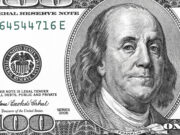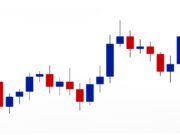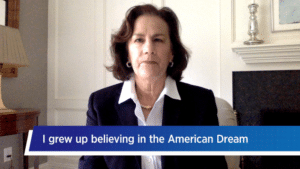Stocks finished lower last week amid a host of concerns. After whipping between steep losses and gains (the S&P 500 moved 1% or more in both directions in each of this week’s sessions), the major indices all suffered weekly losses. The Nasdaq led declines, bleeding 2.6%, the S&P dropped 1.2%, and the Dow fell 0.9%.
The emergence of the first U.S. case of the potentially hyper-contagious variant fueled investor worries mid-week, as the Fed’s announcement to speed up the tapering of bond purchases added pressure. Meanwhile, Congress reached a deal to keep the government open, but the debt ceiling issue has yet to be resolved.
Interest rate policy remains in flux, and as medical professionals have noted, it will probably take a couple of weeks to determine the full impact of the spreading variant. Until a cleared picture forms, volatility is likely to stay elevated.
This week our team will be keeping a close eye on a few stocks, including one SaaS company with its sights on rapid revenue expansion for 2022. We’ve also got the details on a biopharma name answering the call for solutions as continuous waves of variant-related uncertainty threaten the global recovery. Keep reading to learn about these potential winners and much more.
The market has been tough on richly valued high-growth stocks lately. Even though the looming threat of another pandemic wave would drive demand for workflow management disruptor Asana Inc. (ASAN), the stock plunged nearly 40% this week.
Asana is a hypergrowth software-as-service company, as such caused share-holder optimism that had gotten way out of hand in recent months. Between August and November alone, the stock nearly doubled. As the old saying goes, easy come, easy go. Since the mid-November peak, the share price has plummeted back to pre-August levels, bringing heartache to those who were swept up in a frenzy last month, but creating an exciting opportunity for those looking for a more reasonable entry into this potential leader.
During last week’s earnings call, Asana management said to expect at least a 53% year-over-year increase for Q4 FY 2022 revenue to about $105 million, but losses will remain steep for now. One reason is that company management is focused on growing the business above all else right now. Asana is spending aggressively to maximize revenue expansion as part of what seems to be a well-planned growth strategy. Even with heavy spending, cash and short-term equivalents totaled $344 million at the end of Q3 and were offset by a term loan of just $35.6 million.
“We are excited to be announcing that we exceeded two million paid seats, and we are landing bigger with larger customers and expanding significantly across our customer base. With some of the most valuable companies in the world deploying Asana to manage initiatives across entire divisions, Asana exemplifies what cross-functional work management at scale looks like,” said Dustin Moskovitz, co-founder, and chief executive officer of Asana.
The current consensus among 12 analysts offering recommendations is to Buy Asana. Eight rate the stock a Buy, and four call it a Hold. There are no Sell ratings for the stock. A median 12-month price target of $101.50 represents a 52% upside from the last price.
Multiple cases of Omicron, the heavily mutated coronavirus variant, have been reported in several countries outside of South Africa (where it was first identified), including the U.S. The World Health Organization stated it believes this COVID variant is likely to spread further, posing a “very high” global risk. It will probably be a couple of weeks before we get clarity around the actual severity of the situation; current evidence suggests that the omicron COVID-19 variant may have higher transmissibility than previous variants and is likely to become dominant in the short term. This should increase the demand for antibodies that can neutralize the variant.
Adagio Therapeutics (ADGI) is one name we’re watching for its lead COVID antibody, ADG20, an investigational monoclonal antibody product candidate designed to provide broad and potent neutralizing activity against COVID-19 with potential duration of protection for up to one year in a single injection.
Previously disclosed data demonstrated sustained neutralizing activity of ADG20 against a diverse panel of circulating SARS-CoV-2 variants, including the recently emerged Lambda, Mu, and Delta plus variants. Based on published epitope mapping and structural studies, Adagio anticipates that ADG20 will retain neutralizing activity against the omicron variant, whereas other mAb products may lose substantial activity against it.
Morgan Stanley analyst Matthew Harrison was among several to upgrade ADGI. The analyst noted that current evidence suggests that the omicron COVID-19 variant may have higher transmissibility than previous variants and is likely to become a new dominant variant in the short term. The high transmissibility, once confirmed, should increase demand for antibodies that can neutralize the variant, but current leading antibodies, including those from Eli Lilly and Regeneron, are compromised by Omicron, said Harrison. However, Harrison tells investors that Adagio’s ADG20 remains highly effective at neutralizing Omicron and possesses other “preferable characteristics,” including coverage of multiple variants. He added 4M doses of government stockpiling for Adagio’s ADG20 in 2022 to his projections and now forecasts about $1.8B in sales. The analyst gave ADGI an Overweight rating and raised the price target to $49.
It doesn’t seem likely that Omicron will be the last variant to emerge. Adagio’s ADG20’s neutralization breadth/potency, long duration of protection, and logistically friendly administration profile make a good option for combating these continued waves of variant-related uncertainty.
Last up on our list is a set it and forget it way to help you get ahead of rising interest rates. The ProShares Equities for Rising Rates ETF (EQRR) is the first equity ETF specifically designed to outperform traditional U.S. large-cap indexes during periods of rising interest rates. It targets sectors that have had the highest correlations to 10-year U.S. Treasury yields, and within those sectors, the stocks that have had a strong tendency to outperform as rates rise. Stocks from the Financials and Basic Materials sectors account for the largest portion of the fund’s holdings. Currently, the fund’s top holdings are State Street Corp. (STT), Bank of America (BAC), and Truist Financial (TFC).
EQRR tracks the performance of the Nasdaq Large Cap Equities for Rising Rates Index. The fund’s goal is to provide relative outperformance, as compared to traditional U.S. large-cap indexes, such as the S&P 500, during periods of rising U.S. Treasury interest rates.
The index takes the 500 largest listed U.S. stocks and selects the five U.S. large-cap sectors that have demonstrated the highest correlation to weekly changes in 10-Year U.S. Treasury yields over the last three years. The index then identifies the top ten stocks in each sector that have the highest correlation of relative performance – compared with 500 of the most extensive listed U.S. stocks – to changes in the 10-year yields. The process is repeated quarterly to maintain a portfolio of 50 stocks. EQRR serves well as a protective measure when rates rise and also Can be used to complement traditional large-cap equity investments.
ProShares Equities for Rising Rates (EQRR)
- Weighted Average Market Cap $75.59B
- Price / Earnings Ratio 24.36
- Price / Book Ratio 2.17
- YTD Daily Total Return 29.25%
- YTD Return 40.7%
- Yield 1.51%
- Expense Ratio 0.35%
- Net Assets 7.85M
- Number of Holdings 51
Should you invest in Adagio Therapeutics right now?
Before you consider buying Adagio Therapeutics , you'll want to see this.
Investing legend, Keith Kohl just revealed his #1 stock for 2022...
And it's not Adagio Therapeutics .
Jeff Bezos, Peter Thiel, and the Rockefellers are betting a colossal nine figures on this tiny company that trades publicly for $5.
Keith say’s he thinks investors will be able to turn a small $50 stake into $150,000.
Find that to be extraordinary?
Click here to watch his presentation, and decide for yourself...
But you have to act now, because a catalyst coming in a few weeks is set to take this company mainstream... And by then, it could be too late.
Click here to find out the name and ticker of Keith's #1 pick...















